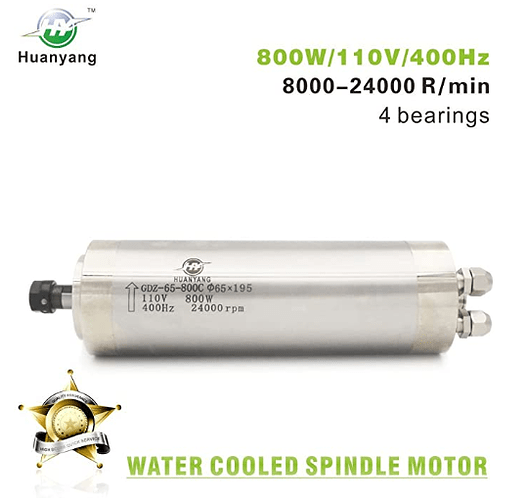I found an interesting part on Amazon that lets you convert the pulse width modulation signal from the Shapeoko controller to an analog voltage. I bought one and attached the 0 to 10 V output to my Huanyang variable frequency drive (spindle). It works although the actual RPM is different than the RPM. I used the MDI feature on the Shapeoko to enter some RPM values and looked at the RPM reading on the Huanyang display. From what I have read on various forums, a difference is to be expected. Some people suggested adjusting the PWM to analog converter so that a middle value is correct (example tune the converter to make 12000 RPM on the money). I chose to make a table of input value versus actual in a spreadsheet and then used a table driven interpolation calculation to compute the value needed to get the desired RPM.
Since the latest version of Carbide Motion (v5) allows you to turn the spindle on and off automatically, I can now run a job more easily. The other nice feature is the support for the new bit setter allowing multiple bits to be used within a single gcode file.
Here is the PWM to analog part ($9.80 at time of this post):
For your reference, the following gcode commands are used to start and stop the spindle, where a 10,000 RPM value is given with the start command:
m3 s10000
m5
Please note that I used a 15 V power supply based upon some online advice in order to insure a full 0 to 10 V range on the output.
Later on I found a switching relay power strip at OpenBuilds for $28. Since it only needs a voltage of 3V or above to control the switching, I decided to try it with a PWM to analog converter and, sure enough, it worked! Now both my dust control vacuum and the spindle are stopped and started automatically! The $38 combined cost beats the heck out of the $120 Carbide 3D is charging for the same functionality.
I used a separate converter for the dust control vacuum as I wanted to keep the VFD frequency tuning separate from what is needed to start/stop the vacuum.

